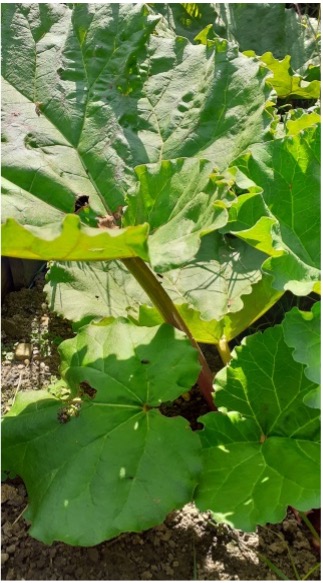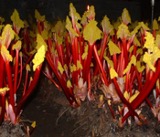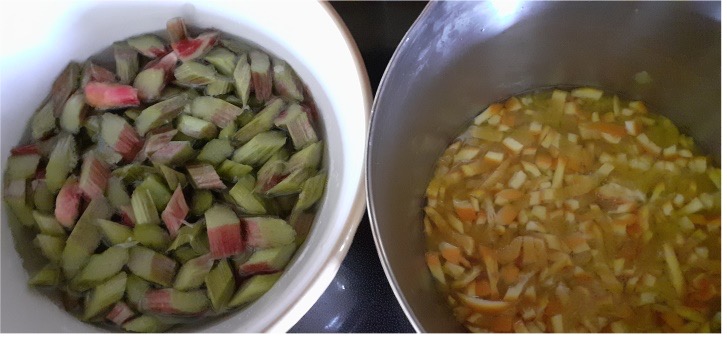 Rhubarb is originally native to Siberia, and was found growing on the banks of the river Volga. It likes the cold, needs plenty of water and a nitrogen rich soil.
Rhubarb is originally native to Siberia, and was found growing on the banks of the river Volga. It likes the cold, needs plenty of water and a nitrogen rich soil.
The first record of Rhubarb being used in English cooking was after 1817, when some roots were accidentally covered with soil in the depth of winter at the Chelsea Physic Gardens. Some weeks later the soil was removed and tender shoots were noticed. These were pink, not green; and tasted sweet not sharp or sour. The technique of “forcing” rhubarb to grow in the dark was then improved and perfected.
During the Second World War the government controlled the price of Yorkshire forced rhubarb at one shilling per pound. Children were given a bag of sugar and a stick of rhubarb to dip into it.
 Rhubarb became part of the staple diet of war time Britain, but unfortunately having been forced to eat it for many years when more exotic fruit became available it fell out of fashion. Rhubarb was relegated to allotments and disappeared from many menus.
Rhubarb became part of the staple diet of war time Britain, but unfortunately having been forced to eat it for many years when more exotic fruit became available it fell out of fashion. Rhubarb was relegated to allotments and disappeared from many menus.
Its flavour has only just begun to be re- appreciated in recent years as a British favourite. Nowadays as well as the classic “rhubarb and custard” combination, perhaps with a crumble or pie, it is regaining popularity for items as diverse as yogurt and gin.
Recipe for Rhubarb and Orange Jam- yields approx. 4kg yield or 10 jars
2 large oranges, 2kg rhubarb cut into 1inch 2.5cm lengths, and 4kg sugar
1. Leave sliced rhubarb layered with the sugar in a bowl overnight to soften and release “juice”.
2. Wash the oranges and cut into thin slices, and then cut the slices into strips Put into a large saucepan or special pan for jam making, barely cover with water and simmer until tender. Do not allow to dry out. 
3. When the orange pieces are tender take off the heat to add the sugar and rhubarb. Return to the heat and stir gently until all the sugar has dissolved.
4. Then boil rapidly until setting point is reached*: use a thermometer and remove from heat at 105 degrees C
5. Pour into clean, warm, dry jam jars and cover to seal quickly.
*To test setting point without a thermometer: place a teaspoon of the liquid onto a chilled saucer and leave for 1 minute. It is reached when the jam wrinkles when pushed with a spoon or a “line” can be drawn which does not close up. If the test flows back into a runny spoonful, boil a little longer and repeat the process until it wrinkles.
